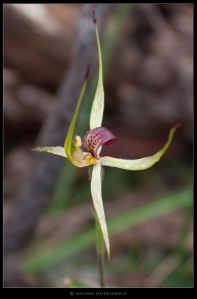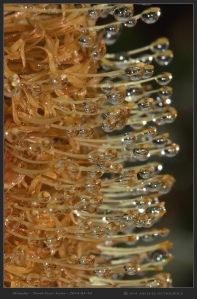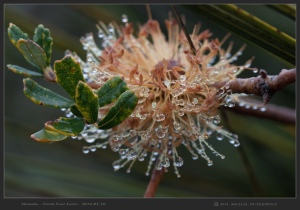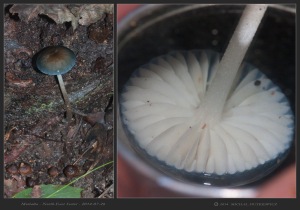



Caladenia (Arachnorchis) leptochila aka Narrow-lipped Spider-orchid, Delicate-lipped Caladenia
Kingdom: Plantae
Phylum: Angiospermae
Class: Monocots
Order: Asparagales
Family: Orchidaceae
Subfamily: Orchidoideae
Tribe: Diurideae
Subtribe: Caladeniinae
Morialta Conservation Park – September 2013 – mild, wet conditions on Central Track
Photos & Text: Michal Dutkiewicz
There is a lot of confusion with plant taxonomy at the moment, and this is one of the victims – Some call it Caladenia leptochila, and others use the name Arachnorchis leptochila ssp leptochila. It often grows nearby to other species such as Caladenia tentaculata, but it is much more slender and the scented tentacled petals, or segments, curve more vertically upwards. It has a hairy stem and is 15-45cm high.
Its flowers can be seen usually on solitary spikes in Spring, from September to November in the Mount Lofty Ranges. According to NOSSA, it prefers “leached, stony soils”. I first encountered it in close proximity to Caladenia tentaculata and at first thought it must be an emerging flower of that species, but after walking around the gravelly, gentle slope, I saw there were clearly two species – I was so stunned by these two species and the others I saw that day! One of the greatest days of my life and my brother and I still refer to that day as Orchid Day! See my other posts on Spider-orchid species here:
http://en.wikipedia.org/wiki/Caladenia
http://bie.ala.org.au/species/Narrow-lip+Spider+Orchid
http://bie.ala.org.au/species/Arachnorchis+leptochila
http://www.johnwamsley.com/november28.html

























